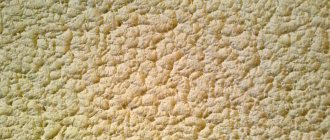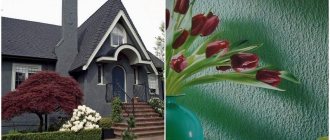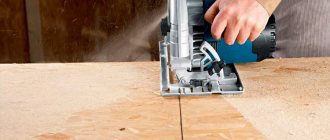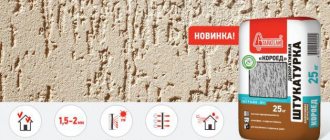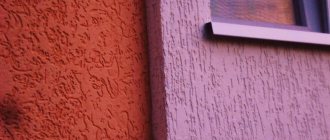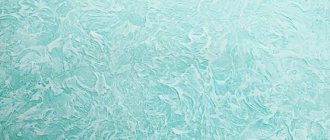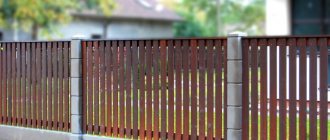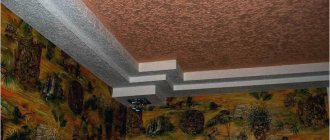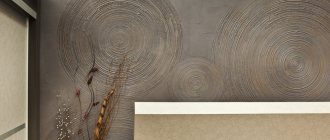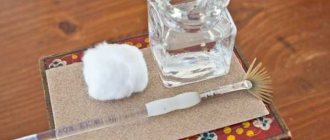Finishing external walls is a responsible undertaking, which is designed to create a protective layer and an attractive appearance. One of the most popular methods is plastering facades. This method does not require professional skills or the use of complex equipment. The material for the work has an acceptable cost, which is significantly less than what is needed for other types of cladding.
Advantages of plastering
Finishing the facade of a house with plaster has many advantages that explain its popularity:
- The coating prevents the penetration of moisture, which has a destructive effect. This does not create barriers to normal vapor exchange, which allows the walls to breathe.
- The outer layer provides additional sound and heat insulation. This is achieved through additives that improve the characteristics of the mixture.
- Decorative appeal. Various types of products and technologies can be used for cladding, which make it possible to obtain texture and the desired color. The plaster mixture can be tinted well.
- Elasticity. Compositions with a polymer component have this property. Due to this quality, the coating does not collapse due to shrinkage of the building and temperature changes.
Modern polymer compositions have unique performance characteristics and enviable beauty - Easy to install. Finishing facades does not require complex mathematical calculations and the construction of a frame.
- Possibility of repair. Any damage can be easily repaired. But if they make up more than 30% of the surface, this means an incorrect choice of composition or violation of application conditions.
All advantages are supported by the affordable price of the material, even taking into account the purchase of modern polymer solutions.
What is good about a decorative facade?
Plaster or wet facade is one of the most beautiful options for the facade of a house.
Valentin63 FORUMHOUSE Member
If we consider a building from an architectural point of view, what a plaster facade is, then secondly it is insulation, and firstly it is a beautiful surface. Plastering the facade gives such beauty that no other facade, not even marble, can provide.
The popularity of the wet facade is also explained by its relatively humane cost (it is more expensive than vinyl siding, but is on par with fiber cement and brick siding).
The plastered facade can be mounted on any walls, it is non-flammable and perfectly insulates light and weak walls, allowing you to save on gas and electricity.
The system consists of insulation, glue, facade dowels, a base layer of plaster, reinforcing mesh and a finishing layer of decorative plaster. Every element in this pie is important, but the wrong choice of decorative plaster can simply ruin the whole thing, you will have to “tear it off and redo it.”
Working with various surfaces
Facade plaster fits well on almost all types of surfaces, although in each specific case the process may differ.
- Walls made of wood. This is the most complex material that requires lengthy preparation. It consists of impregnating the base with protective compounds to prevent putrefactive processes. If work is carried out on a log structure, then a special lathing is created, otherwise the solution will not be able to adhere reliably.
Wood and plaster mortars have different coefficients of expansion, so to apply the mortar either a wooden reinforcing cage is built, which is very problematic, or insulation is attached to the walls and plaster is applied to it - Concrete surfaces. This material has good adhesion, but due to the presence of pores it quickly absorbs moisture, so it is treated with deeply penetrating primers. Problems arise with reinforced concrete slabs that have numerous joints. For such cases, initial treatment with cement compounds will be required.
- Brick facades. To ensure reliable fixation of the applied solution, jointing is carried out.
Each material from which the walls are made requires an individual approach.
On a note! Plastering the facade of a house made of aerated concrete blocks is a responsible undertaking. The fact is that for work, compositions that have lower strength indicators must be used. This is necessary in order to avoid internal tension between materials.
Direct plastering of cellular concrete requires the use of special compounds, but when installing insulation, you can use simpler and cheaper solutions
Mineral
The basic substance of the mineral plaster composition is cement. This is a cost-effective option since all components are affordable. Release form: in bags.
Of the obvious advantages of the composition, we highlight the following:
- Full vapor permeability;
- Resistant to the negative effects of mold;
- Completely fireproof;
- After application and drying, it will not shrink;
- No cracks form after drying;
- Low temperature resistance;
- Moisture resistance;
- Not afraid of temperature fluctuations;
- Environmental friendliness;
- Easy care to maintain aesthetics;
- Relatively low price.
Disadvantages of use:
- It is produced in the form of a dry substance, so it will take time to prepare the working solution;
- The mixture must be prepared taking into account the rules and requirements, otherwise the solution will be unsuitable for use;
- The installation of such cladding is a complex task and will require professional skills and experience from the master;
- Poor selection of colors and shades;
- Painting is possible only after the plastered area has dried, which requires time;
- Sensitivity to vibrations of various types;
- Service life – up to 10 years.
- Additional painting of the plastered area can only be done two days after applying the plaster composition.
For cladding a wooden house, it is better to choose cement or lime-cement plaster.
Types of plaster
The question of what to plaster the walls with is an integral part of the work process. It is not always possible to immediately determine the appropriate type, since there are many options on the construction market that differ in their characteristics.
Plaster for external use is divided into three categories.
Mineral compositions
This group includes mortars based on cement and gypsum.
The first variety is considered the most popular, due to its excellent characteristics and low price. But it has a number of disadvantages that make it difficult to use on newly built houses.
Decorative mineral compositions based on cement have an optimal price-quality ratio
Gypsum composition is used much less frequently due to its low resistance to precipitation, although mixtures have appeared that include many polymers. This leads to the fact that the vapor permeability of the plastered surface is impaired.
Polymer solutions
The group includes the following types for facade plaster: acrylic, silicate and silicone. Each option has a different base, which affects the properties of the material.
The most popular are acrylic mixtures. They have excellent resistance to environmental influences. Their main disadvantage is considered to be flammability and susceptibility to contamination, which implies loss of appearance.
Acrylic compositions are highly resistant to ultraviolet radiation and have a wide color palette
Polymer solutions have a high cost, so initially finishing is carried out with cheaper materials for leveling.
Homemade mixtures
This includes compositions made on the basis of mineral fillers; modifiers and plasticizers act as additives. Plastering external walls using such materials is complicated by the fact that it is almost impossible to achieve the correct selection of components. This limits the durability of the coating.
The choice of one or another composition largely depends on the purpose of the building, so for outbuildings mineral and even homemade plaster is quite suitable, but for the front part of houses it is better to spend money on polymer
Preparing the base and applying the selected solution
After selecting the plaster mixture, you can begin to work. First, you should examine the selected surface, and also check for cracks, slopes, and the like. First you need to remove the old finish and the like so that the new mixture can adhere to the base. Before applying the selected solution, you need to apply a primer mixture to the surface. For cellular and loose materials, it is worth choosing a penetrating mixture, which is applied in a couple of layers and each of them must be dry. If there is a need to make another layer, then you need to reinforce the surface.
Technology
The technology for exterior plastering of a house with your own hands involves dividing the work into stages that are carried out in a strict sequence:
- Selecting the appropriate composition depending on the type of surface and climatic conditions.
- Preparing the base and tools is a responsible procedure that allows you to avoid further problems.
- Installing beacons is the only solution for uneven walls. In addition, plastering the outside of a house becomes much easier, especially if you have no experience.
- Wall finishing - applying the solution in a suitable way.
- Grouting the surface allows you to eliminate unevenness and avoid the appearance of cracks when using certain types of products.
Material selection
Exterior finishing of a house with plaster begins with choosing the appropriate composition. To do this, follow the following rules:
- Self-prepared mixtures are recommended for situations where the surface is supposed to be plastered partially or for a short period of time.
- Mineral solutions require serious consideration. When deciding how to plaster the facade of a house that is not subject to shrinkage, at minimal cost, it is these compositions that you should pay attention to. It should be borne in mind that the material is sold dry and requires preparation.
- Polymer compositions have good elasticity and adhesion. They are sold ready-made, which simplifies the process. But the work must be carried out without delay, since the mixture sets quickly.
Dry mixtures are cheaper and last longer, but it is better for a home craftsman to choose a ready-made mixture, since it is much easier to work with.
Attention! When purchasing, you need to pay attention to the expiration date and manufacturer. It is better to abandon unknown companies whose material costs are lower than others.
Preparatory work
Plastering external walls requires careful preparation of the base:
- If the surface was previously treated with other decorative coatings, they are completely removed. Difficulties may arise when removing paint: such areas have weak adhesion and therefore require high-quality cleaning. To do this, you can use special washes. Small fragments of paint are removed mechanically.
Fresh plaster should never be applied over the old finish, as the likelihood of subsequent peeling is too high - Assess the condition of the base. Finishing work cannot be carried out on coatings that have cracks, chips or other problems. Plastering the facade helps to hide only minor defects.
- The cracks are opened and cleaned. If the damage is large or located at the junction, then fiberglass reinforcing mesh is used. It is placed on the applied solution and covered well.
- The walls are primed. A composition suitable for a particular material is selected. Apply two or three layers, after each wait until the surface dries.
If work is carried out on walls that have weak adhesion (for example, reinforced concrete slabs), then before plastering they are covered with reinforcing mesh. It is stretched along the entire perimeter; dowels and screws are used for fastening.
The reinforcing mesh can be steel or fiberglass, but regardless of the material, it must be stretched onto the wall without creases or overlaps.
Insulation
Some doubts may arise when you need to decide how to plaster a house to create a layer of thermal insulation. This situation occurs quite often. To do this, perform the following steps:
- After preparation, the surface is impregnated with antiseptics.
- The work is carried out using rigid insulation: penoplex or polystyrene foam. The sheets are laid in a checkerboard pattern with glue and fixed with special dowels.
- The joints are coated with sealant or foam. This will avoid the occurrence of “cold bridges”.
- A membrane and reinforcing mesh are stretched on top.
On a note! The thickness of thermal insulation products depends on the climate of the area and the characteristics of the house.
In the European part of the country, the thickness of thermal insulation under plaster is 50 – 70 mm, in the northern regions it starts from 100 mm
Pros of finishing
External plaster has the following advantages:
- The work is not difficult and the involvement of experienced specialists is not required. Having some theoretical knowledge about the nuances of technology and having minimal experience in construction, you yourself will plaster the external walls;
- the surface receives additional strength and resists impacts and scratches;
- the coating is resistant to temperature changes and is not susceptible to the negative effects of a humid environment;
- external plaster of the house improves protection from extraneous noise and helps retain thermal energy inside the building;
- vapor permeability increases. Air flows pass through the plaster layer, all conditions are created for natural ventilation;
- acceptable cost. Although the finishing material is not cheap, its price is affordable for most developers;
- a wide range of products differing in texture and color shades;
- decorative appeal of the material and its maintainability;
- the elasticity of some solutions does not allow the coating to collapse during the shrinkage of the building.
Having plastered the outside of the house, many are faced with a problematic issue - after some time, cracks form on the walls, the finishing layer crumbles in places.
The main problem lies in the incompatibility of the finishing material and the wall surface. When purchasing plaster, pay attention to the type of wall.
Installation of special beacons
Plaster beacons are guides made of metal profiles mounted on the wall. Moving along them, the tip of the trapezoidal rule turns the freshly applied solution into a perfectly flat plane. To achieve this result you need to install them correctly.
How to do it right:
- The prepared wall is weighed with a load to determine its vertical deviation from the level. If the tops “sag,” then the vertical deviation at the top is greater than at the bottom. Therefore, during the installation of beacons, you will have to add a solution under them. And vice versa.
- Take the lighthouse and shorten it as much as necessary. The thickness of metal beacons is 6 or 10 mm, and the length is 3 or 4 meters. Please note that 6 mm beacons are more flexible. In view of this, it is more reasonable to use 10 mm. However, because of this, the thickness of the plaster layer will increase by 4 mm.
- Paint the wall approximately 20 - 30 cm from the corner with one line in the form of dots. Leave approximately 50 cm between the beacons. The mixture should be thick. The patches should be 5-15 cm in diameter, and the height will depend on the thickness of the future façade plaster. The thicker the layer, the greater the height. Also remember to consider where the greatest shift from level is.
- Place the beacon and lightly press it into the mixture. Then attach a rule with a built-in level to it and, pressing or pulling the beacon, achieve the desired vertical wall. We immediately clean the lighthouse from sagging, and smooth out the protruding areas with a spatula.
- When the solution has adhered, carefully seal the voids that remain under the lighthouse. Do the same on the contrary.
- Try to ensure that there is no more than 1.7-1.8 m between adjacent beacons. This makes it more convenient to handle the 2-meter trapezoid rule during leveling work.
If the size of the wall exceeds 2 meters, then add guides between the beacons placed in the corners.
